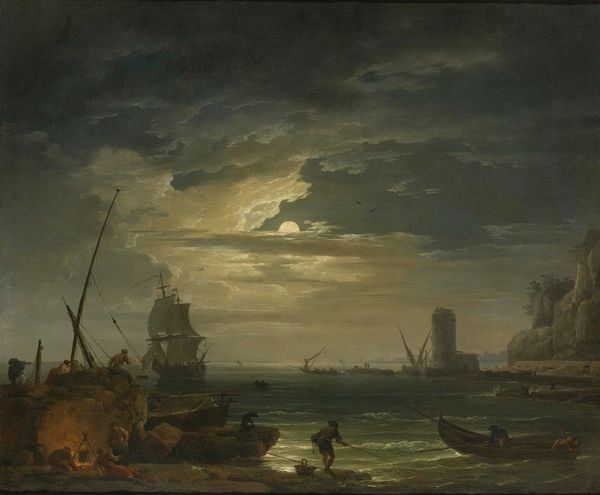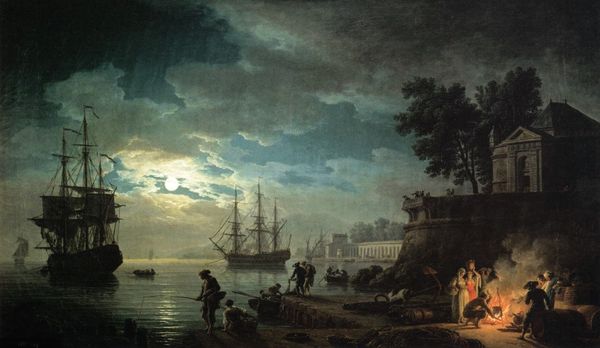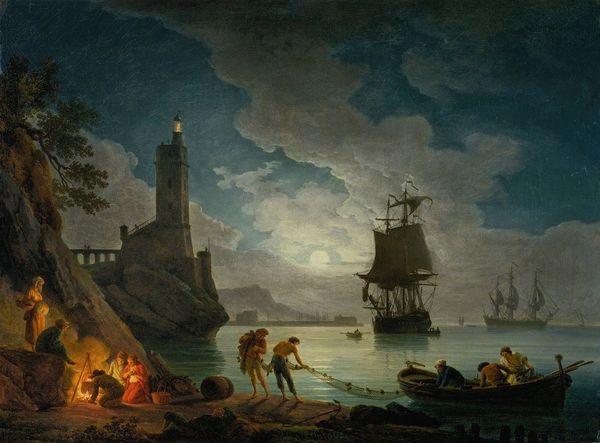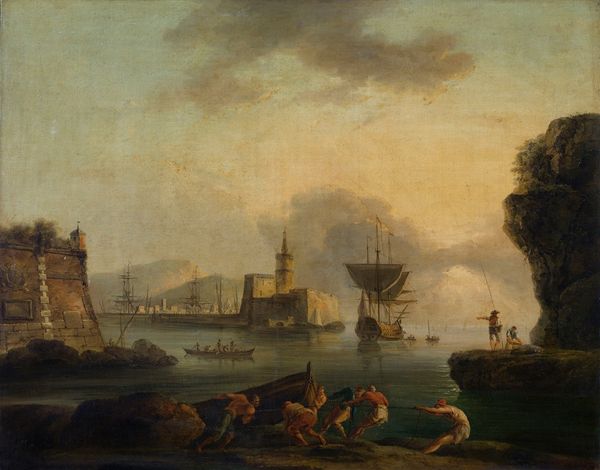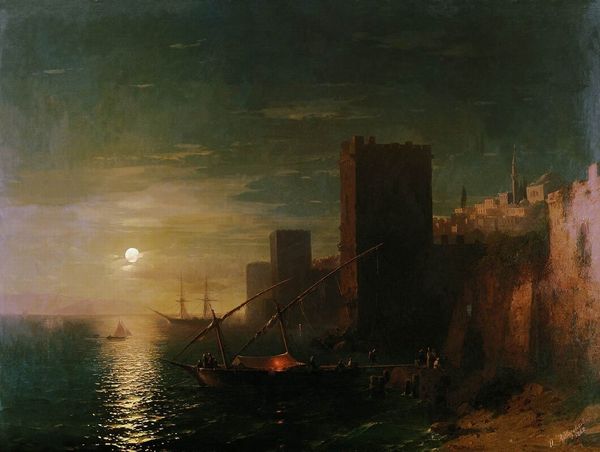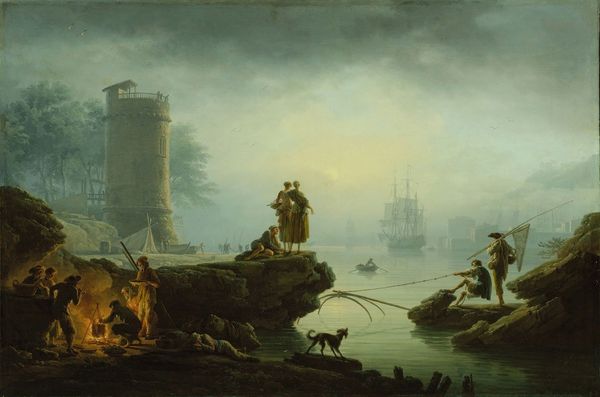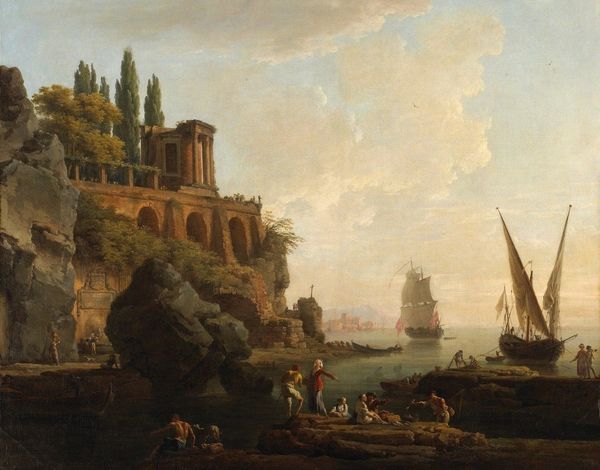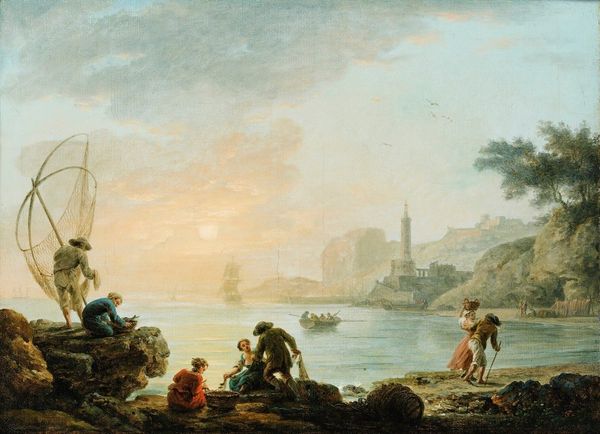
Nuit - Scène de côte méditerranéenne avec des pêcheurs et des bateaux 1753
0:00
0:00
claudejosephvernet
Thyssen-Bornemisza Museum, Madrid, Spain
Dimensions: 96 x 134 cm
Copyright: Public domain
Curator: Let’s explore "Nuit - Scène de côte méditerranéenne avec des pêcheurs et des bateaux," or "Night - Mediterranean Coastal Scene with Fishermen and Boats," crafted in 1753 by Claude-Joseph Vernet. What strikes you first about this nocturnal tableau? Editor: The paint application itself! The almost tactile way Vernet builds up the textures of the clouds and the crumbling masonry. I can almost feel the grit of the sand and the dampness in the air. Curator: Absolutely, the romantic era favored expressive brushwork. Notice how Vernet employs light and shadow, or chiaroscuro, not just for dramatic effect but to subtly underscore the cultural narratives at play? The distant cityscape illuminated compared to the mundane activities on the shore… Editor: It certainly guides the eye. I am fascinated by the sheer quantity of pigment needed to achieve this level of luminescence in the moon and the buildings. Who were Vernet’s suppliers? What were the labor conditions in those mines that produced the ultramarine or lead white? And that texture—it's clear this wasn't some quick sketch; it involved layers upon layers, time, and significant expense. Curator: A pertinent point about the cost! This painting, beyond its surface beauty, captures a moment of transition, where the divine light, emanating perhaps from the moon but implying enlightenment values, clashes with the darker, older structures of society, represented by that ancient tower and the simple lives of the fishermen. The fishermen huddle around their fire. Fire—the primal, as opposed to enlightenment values. Editor: So, these symbols point to established orders. But I see labor—nets being cast, boats needing repair. These activities aren't romantic idylls. I would guess, given Vernet’s status and patronage, he might never have encountered these labors himself. His vision of the "night scene" comes to us mediated by his privileged position. Curator: Perhaps… yet, look at the painting's persistent appeal. The imagery, those fishing boats silhouetted against the radiant sky, they echo through time, resurfacing in countless artistic renderings of the human spirit grappling with both nature and its own history. Editor: True. But it also highlights the transformation of material into art. Ground minerals, mixed with oils, applied with brushes by a skilled, likely male, hand… this labor creates a commodity that ends up in a museum, far removed from the coastal scene depicted. Curator: I see what you mean. This piece offers a powerful meditation on humanity’s relationship with both the sublime and the quotidian aspects of existence. Editor: And with production, commerce and access! Looking at it through this lens invites us to consider the broader forces that shape not just the art but our perceptions of history, of culture and our world.
Comments
No comments
Be the first to comment and join the conversation on the ultimate creative platform.
